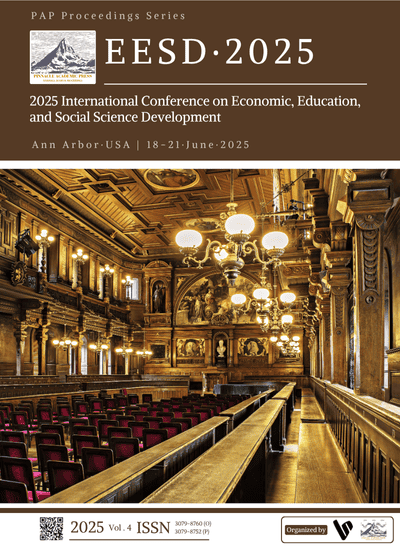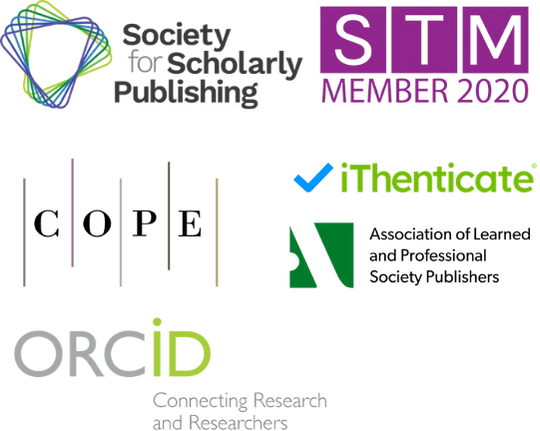Application of Cell Biology and Molecular Biology Principles in Monoclonal Vaccines and Drug Delivery Systems
DOI:
https://doi.org/10.71222/0t98mj47Keywords:
cell biology, molecular biology, monoclonal antibodies, vaccines, drug delivery, nanomedicine, targeted therapy, immunotherapyAbstract
Advances in cell and molecular biology have revolutionized vaccine development and drug delivery. This review explores how mechanisms such as receptor-mediated uptake, genetic engineering, and immune modulation inform the design of monoclonal antibody-based prophylactics and advanced delivery systems. We examine theoretical foundations including antigen–antibody recognition, endocytosis pathways, and techniques like phage display and mRNA vaccine platforms. Practical applications discussed include monoclonal antibodies for viral prevention and treatment, structure-based immunogens, and diverse delivery systems such as nanoparticles, antibody–drug conjugates, viral vectors, and cell-derived vesicles. Case studies, including COVID-19 mRNA vaccines and RSV-targeting antibodies, demonstrate how molecular design enhances delivery efficacy. We compare delivery platforms in terms of targeting, safety, and performance, and address current challenges such as biological barriers and regulatory complexity. Looking ahead, we highlight innovations like smart materials and synthetic biology. This review underscores how cellular and molecular principles are guiding the next generation of precise and effective medical interventions.
References
1. Y. Ju, et al., "Application of advances in endocytosis and membrane trafficking to drug delivery," Adv. Drug Deliv. Rev., vol. 157, pp. 118–141, 2020, doi: 10.1016/j.addr.2020.07.026.
2. K. Swetha, et al., "Recent advances in the lipid nanoparticle-mediated delivery of mRNA vaccines," Vaccines, vol. 11, no. 3, p. 658, 2023, doi: 10.3390/vaccines11030658.
3. W. Liu, et al., "Theoretical basis, state and challenges of living cell-based drug delivery systems," Theranostics, vol. 14, no. 13, pp. 5152–5170, 2024, doi: 10.7150/thno.99257.
4. R. Neupane, et al., "Endocytic highways: Navigating macropinocytosis and other endocytic routes for precision drug de-livery," Int. J. Pharm., 2025, p. 125356, doi: 10.1016/j.ijpharm.2025.125356.
5. H. Chen, et al., "Exosomes, a new star for targeted delivery," Front. Cell Dev. Biol., vol. 9, p. 751079, 2021, doi: 10.3389/fcell.2021.751079.
6. K. D. R. Roth, et al., "Developing recombinant antibodies by phage display against infectious diseases and toxins for diag-nostics and therapy," Front. Cell Infect. Microbiol., vol. 11, p. 697876, 2021, doi: 10.3389/fcimb.2021.697876.
7. I. Menon, et al., "Microneedles: A new generation vaccine delivery system," Micromachines, vol. 12, no. 4, p. 435, 2021, doi: 10.3390/mi12040435.
8. M. Singh and D. O'Hagan, "Advances in vaccine adjuvants," Nat. Biotechnol., vol. 17, no. 11, pp. 1075–1081, 1999, doi: 10.1038/15058.
9. S. Zhou, et al., "Emerging microelectronic microneedles (eMN) for biomedical applications," J. Mater. Chem. C, vol. 12, no. 27, pp. 9868–9887, 2024, doi: 10.1039/D4TC01576B.
10. H. Nsairat, et al., "Liposomes: Structure, composition, types, and clinical applications," Heliyon, vol. 8, no. 5, p. e09394, 2022, doi: 10.1016/j.heliyon.2022.e09394.
11. I. N. Weerarathna, et al., "Prophylactic and therapeutic vaccine development: Advancements and challenges," Mol. Biomed., vol. 5, no. 1, p. 57, 2024, doi: 10.1186/s43556-024-00222-x.
12. B. Resch, "Nirsevimab for respiratory syncytial virus prophylaxis in newborns and infants," NEJM Evid., vol. 4, no. 3, p. EVIDe2400440, 2025. , doi: 10.1056/EVIDe2400440.
13. S. B. Drysdale, et al., "Nirsevimab for prevention of hospitalizations due to RSV in infants," N. Engl. J. Med., vol. 389, no. 26, pp. 2425–2435, 2023, doi: 10.1056/NEJMoa2309189.
14. E. Fang, et al., "Advances in COVID-19 mRNA vaccine development," Signal Transduct. Target. Ther., vol. 7, no. 1, p. 94, 2022, doi: 10.1038/s41392-022-00950-y.
15. Y. Yang, et al., "DS2 designer pre-fusion F vaccine induces strong and protective antibody response against RSV infection," npj Vaccines, vol. 9, no. 1, p. 258, 2024, doi: 10.1038/s41541-024-01059-9.
16. M. F. Bachmann, et al., "Virus-like particles: A versatile and effective vaccine platform," Expert Rev. Vaccines, vol. 24, no. 1, pp. 444–456, 2025, doi: 10.1080/14760584.2025.2508517.
17. ] S. Adepu and S. Ramakrishna, "Controlled drug delivery systems: Current status and future directions," Molecules, vol. 26, no. 19, p. 5905, 2021, doi: 10.3390/molecules26195905.
18. S. Chu, et al., "pH-responsive polymer nanomaterials for tumor therapy," Front. Oncol., vol. 12, p. 855019, 2022, doi: 10.3389/fonc.2022.855019.
19. R. Wang, et al., "Antibody–Drug Conjugates (ADCs): Current and future biopharmaceuticals," J. Hematol. Oncol., vol. 18, no. 1, p. 51, 2025
20. Y. Shi, et al., "The EPR effect and beyond: Strategies to improve tumor targeting and cancer nanomedicine treatment effi-cacy," Theranostics, vol. 10, no. 17, pp. 7921–7942, 2020.
21. Q. Liu, et al., "Current research trends of nanomedicines," Acta Pharm. Sin. B, vol. 13, no. 11, pp. 4391–4416, 2023
22. M. Fontana, et al., "CRISPR-Cas9 gene editing with Nexiguran Ziclumeran for ATTR cardiomyopathy," N. Engl. J. Med., vol. 391, no. 23, pp. 2231–2241, 2024, doi: 10.1056/NEJMoa2412309.
23. J. D. Gillmore, et al., "CRISPR-Cas9 in vivo gene editing for transthyretin amyloidosis," N. Engl. J. Med., vol. 385, no. 6, pp. 493–502, 2021, doi: 10.1056/NEJMoa2107454.
Downloads
Published
Issue
Section
License
Copyright (c) 2025 Mikarly Zhong (Author)

This work is licensed under a Creative Commons Attribution 4.0 International License.



